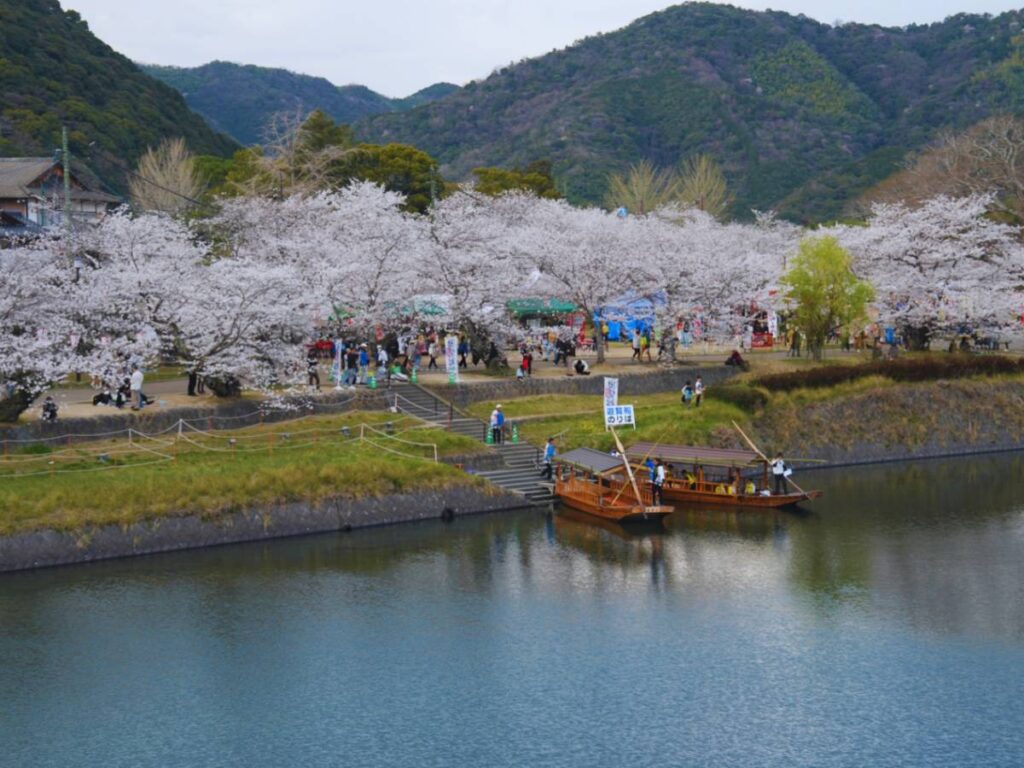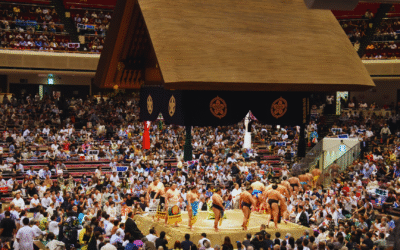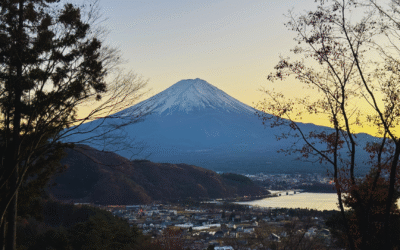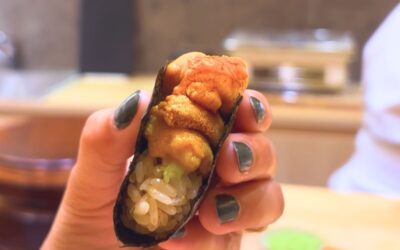When people think of travelling in Japan, places like Tokyo, Kyoto, or Osaka usually steal the spotlight. But what if I told you there’s a place where you can walk along dramatic coastal bridges, soak in peaceful mountain onsen towns, and explore some of Japan’s most stunning natural and spiritual spots – all without the crowds?
Welcome to Yamaguchi Prefecture – tucked away in the westernmost tip of Honshu, it’s like the quiet cousin in Japan’s travel family. But don’t let that fool you. Yamaguchi is bursting with jaw-dropping scenery, unique shrines, rich history, and those authentic, slow-travel vibes that make a trip truly memorable.
Whether you’re into photogenic coastlines, mysterious caves, or relaxing hot spring retreats, Yamaguchi delivers – and then some. Here’s your ultimate guide to what to see, where to go, and how to do it all in three amazing days.
Top Attractions in Yamaguchi
Tsunoshima Bridge (角島大橋)
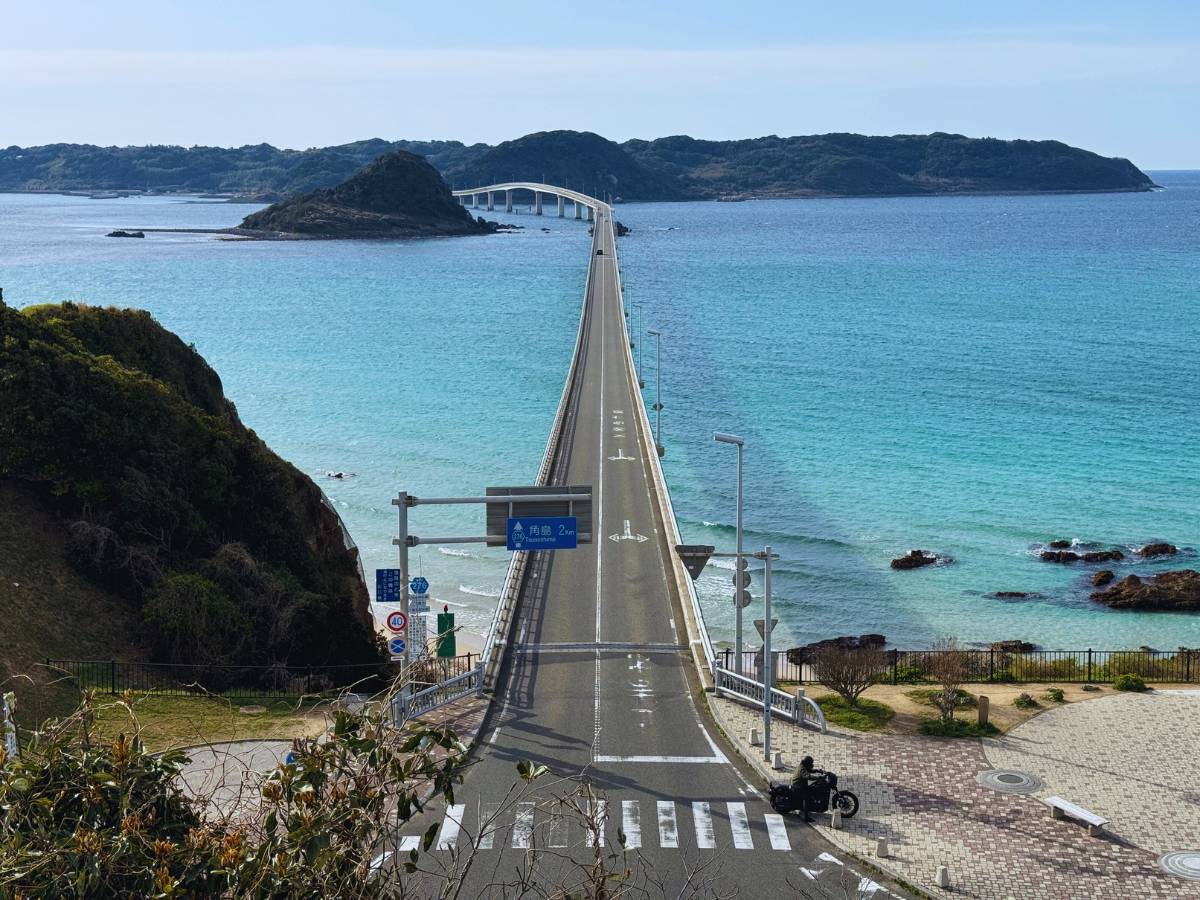
Stretching gracefully over the crystal-clear waters of the Sea of Japan, Tsunoshima Bridge is one of the most photogenic drives in all of Japan – and honestly, it feels more like Okinawa than Honshu. At 1,780 metres long, this sleek, low-lying bridge connects the mainland to the small island of Tsunoshima and gives you that dreamy, endless-ocean-road vibe that road trip fantasies are made of.
What makes this spot so magical is the colour of the water – on a sunny day, the sea glows in shades of turquoise and emerald that seem totally unreal. As you drive across, you’re surrounded by panoramic views of the coastline, the distant lighthouse, and the gentle curve of the road itself. It’s no wonder this bridge often pops up in car commercials and travel magazines – it’s cinematic without even trying.

At the end of the bridge, you’ll reach Tsunoshima Island, a sleepy little spot with quiet beaches, rocky coves, and a nostalgic atmosphere. You can visit the iconic Tsunoshima Lighthouse or just chill out by the sea with some local seafood. There’s also a rest area before the bridge that’s perfect for grabbing a bite and snapping those must-have bridge shots.
Pro tip: visit earlier in the morning or closer to golden hour to dodge the harsh midday light and tour buses. You’ll get better photos and a much more peaceful vibe.
Motonosumi Inari Shrine (元乃隅神社)
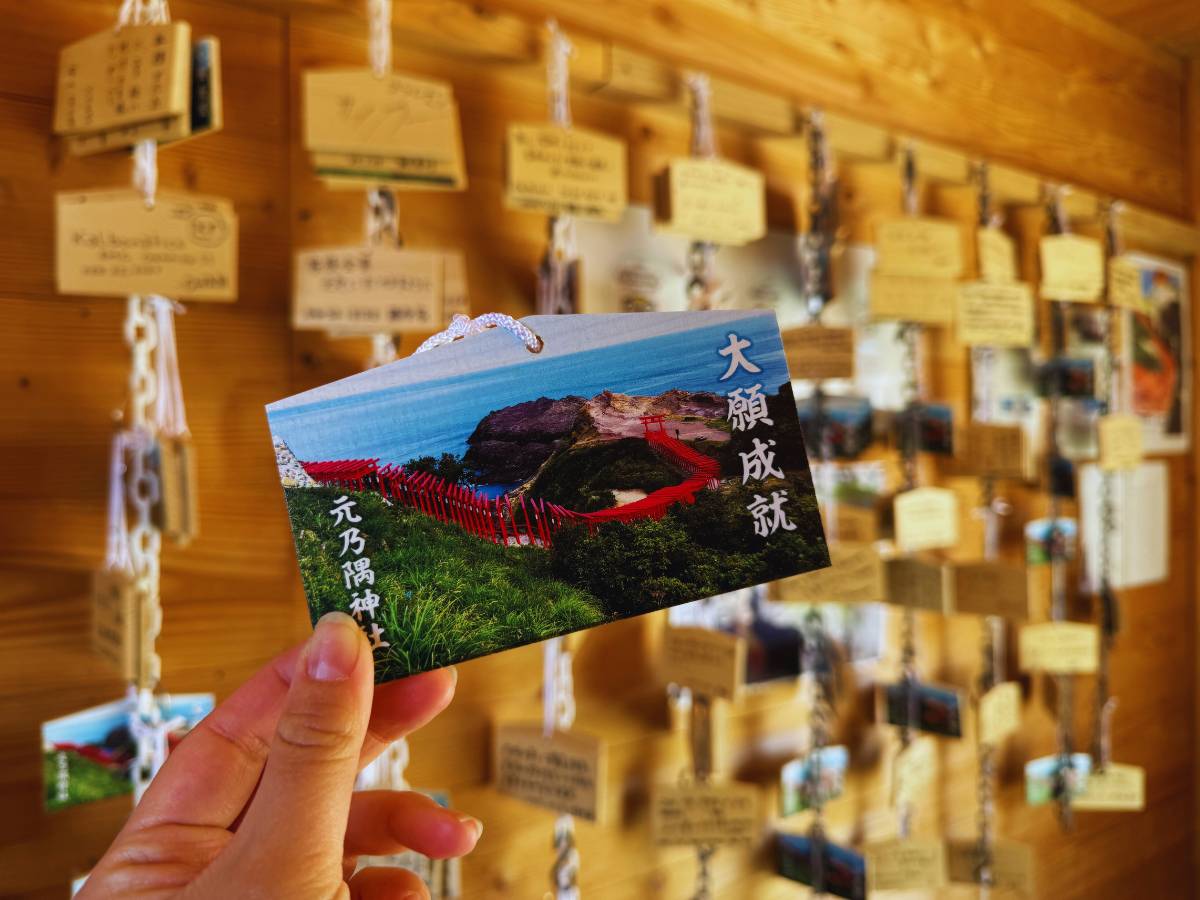
Tucked into a rugged cliffside overlooking the Sea of Japan, Motonosumi Inari Shrine is one of Yamaguchi’s most iconic spiritual spots – and visually, it’s absolutely unforgettable. The star of the show is the row of 123 bright red torii gates, winding down towards the ocean in a dramatic, zigzagging path that feels both mystical and cinematic.
Originally built in 1955, this shrine isn’t ancient by Japanese standards, but its energy feels timeless. It was inspired by a vision received by a local fisherman, who was told by a white fox spirit to build a shrine in honour of Inari, the deity of prosperity, agriculture, and good fortune.

Today, people come here to pray for everything from business success to safe travels, and it’s common to see visitors trying their luck by tossing coins into the offertory box perched high above one of the torii gates – not an easy shot!
Aside from its spiritual roots, the scenery here is absolutely breathtaking. With the crimson torii set against crashing waves and deep blue sea, it’s an unbeatable combo of nature and culture. On a windy day, it can feel almost wild – like you’ve found a portal into another world.

Make sure to walk all the way down through the gates and look back up for that classic photo angle. There’s also a little shop selling charms and souvenirs, plus some food stalls nearby depending on the season.
Higashi Ushitobata Rice Terraces (東後畑棚田)

Hidden away in the hills of Nagato, Higashi Ushitobata Rice Terraces offer one of the most peaceful and poetic views in Yamaguchi. These beautifully layered fields roll down towards the coastline, reflecting the sky and sea in a way that almost makes them look like glass. It’s a picture of rural Japan at its most serene – the kind of place that makes you take a deep breath and just be for a moment.
What makes this spot so special is how the landscape shifts throughout the year. In spring and early summer, the paddies are flooded and mirror the clouds above, while later in the year, they turn lush and green before eventually being harvested in golden waves.
But the ultimate time to visit? Just before sunset, when the sun sinks behind the horizon and casts a warm glow over the terraces, the sea, and the little fishing boats in the distance.

There’s something cinematic about the way the terraces seem to melt into the coastline, blurring the line between land and water. You’ll often see local photographers setting up their tripods here to capture that perfect golden-hour shot. It’s a quieter destination, not too touristy, which adds to the charm – just you, the wind in the rice stalks, and a really good view.
Bring snacks and take your time – there aren’t many shops or facilities nearby, so it’s all about soaking in the natural beauty and getting a feel for the slower pace of life in rural Yamaguchi.
Nagato Yumoto Onsen (長門湯本温泉)

Nestled in a narrow valley surrounded by lush forested hills, Nagato Yumoto Onsen is the perfect place to press pause and truly relax. This hot spring town has been around for over 600 years, making it one of the oldest onsen spots in Yamaguchi – and it’s got all the peaceful vibes you’d expect from a place with that much history.
Unlike the flashy resort towns, Nagato Yumoto keeps things simple and soulful. Think gentle riverside walks, traditional ryokan inns, and the soothing sound of water flowing past your window.
There’s a revitalised central promenade that’s been thoughtfully designed with footbaths, lantern-lit pathways, and local artisan shops – ideal for a quiet evening stroll after a soak.

The hot spring waters here are soft and silky, said to be great for your skin and perfect for melting away travel fatigue. Even if you’re just visiting for the evening, don’t miss the chance to hop into one of the public baths or ryokan day-use onsen.
Akiyoshidai (秋吉台)

Akiyoshidai is Japan’s largest karst plateau – and it’s a surreal sight to behold. Picture miles and miles of grassy hills dotted with pale limestone boulders, some jagged like teeth, others worn smooth by time. It’s unlike anywhere else in Japan, and feels more like something you’d stumble upon in another world.
This unique landscape was formed over hundreds of millions of years from a coral reef that was slowly pushed inland and up by tectonic forces. Over time, rain and erosion sculpted the land into its current form – a rare geological wonder and a designated national park.
There are a bunch of trails you can wander, from short loops to longer hikes, all offering peaceful views and the occasional glimpse of wildflowers, butterflies, or grazing cows.

Akiyoshidai is especially magical in the early morning when mist hangs low over the hills, giving it a mysterious, dreamlike vibe. In summer, the grass is a vibrant green, while in winter it turns golden and windswept – every season has its own charm. And because it’s off the main tourist circuit, chances are you’ll have the views mostly to yourself.
The area is also popular with cyclists and photographers, and there’s a small rest centre with maps, toilets, and snacks. It pairs perfectly with a visit to the cave system below – which brings us to…
Akiyoshido Cave (秋芳洞)

Just beneath Akiyoshidai lies Akiyoshido Cave, one of Japan’s largest and most impressive limestone caves. It’s a mind-blowing experience from the moment you step inside – cool air hits your face, water drips from the ceiling, and the sound of underground streams echoes softly around you. It’s like stepping into a fantasy novel.
The cave stretches for over 9 kilometres, though only about 1 kilometre is open to the public. The walkways are easy to follow, well-lit, and offer close-up views of some seriously surreal rock formations.

There are natural terraces that look like giant rice paddies, towering limestone columns, and a waterfall deep inside the cave that feels like it belongs on another planet. Some of the formations even have cheeky nicknames – like “The Umbrella” or “The Gold Column” – just to keep things fun.
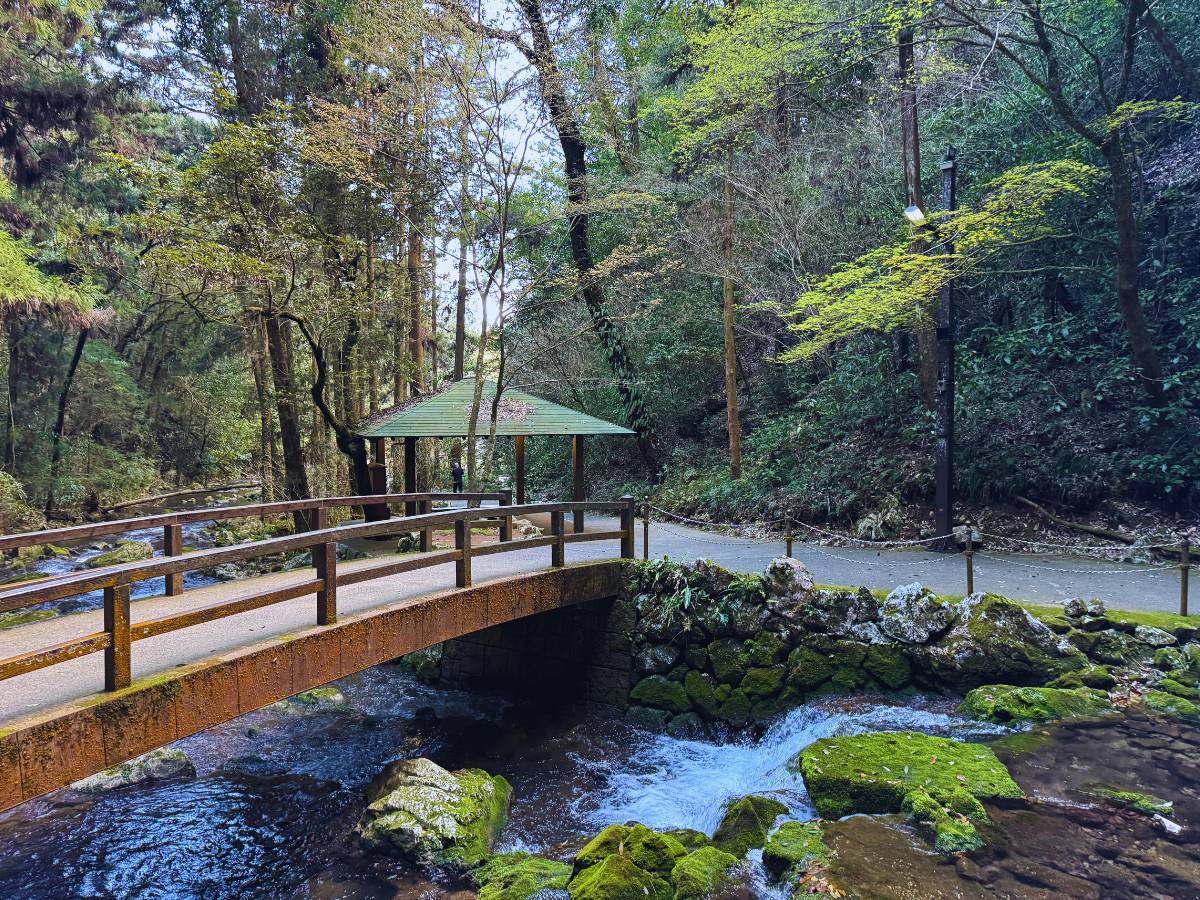
One of the coolest parts of the experience is the contrast between the bright, open hills above and the cool, shadowy world below. You’re literally walking through millions of years of history, layer by layer. And if you’re into geology (or just love a good natural wonder), this place will blow your mind.
After exploring the cave, you’ll pop out at a different exit – follow the stream back to the entrance or grab an ice cream from the nearby souvenir shops and take it slow. It’s a refreshing and fascinating stop that’s 100% worth the detour.
Rurikoji Temple (瑠璃光寺)

Set quietly in the city of Yamaguchi, Rurikoji Temple is one of the area’s most beautiful and peaceful historic spots. The standout feature is its five-storey pagoda, a stunning piece of Muromachi-era architecture that dates back to the 15th century. Surrounded by landscaped gardens and framed by forested hills, the whole place radiates calm.
Just a heads-up though—until around July 2025, the pagoda is under restoration and currently covered with scaffolding and construction sheets. You can still wander the serene temple grounds and enjoy the surrounding park, but the pagoda itself won’t be fully visible for a little while.
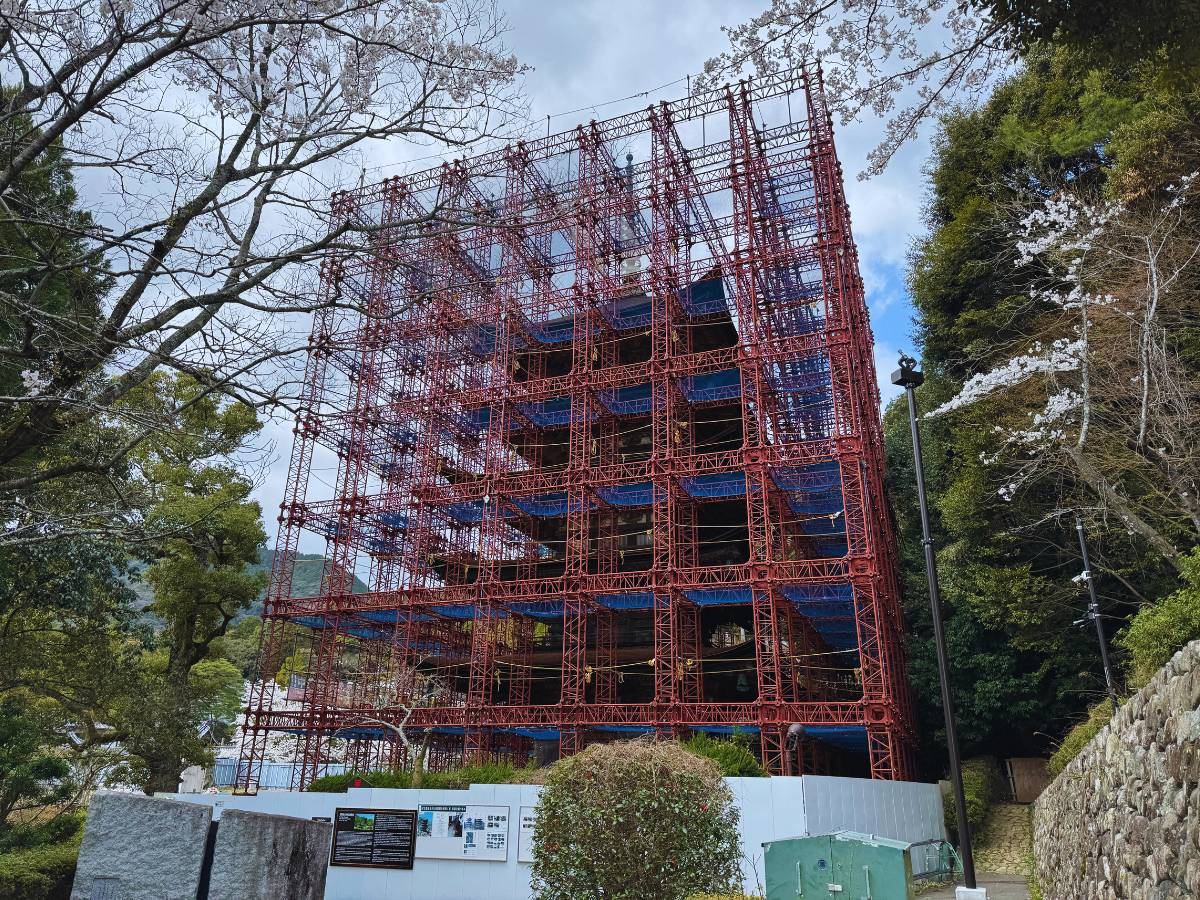
The pagoda itself is considered one of the three most beautiful in all of Japan – and it’s not hard to see why. It’s perfectly balanced, with elegant lines and a weathered wooden exterior that looks incredible in every season, especially with cherry blossoms in spring or fiery leaves in autumn. At night, it’s softly lit, giving the whole temple grounds an almost ethereal glow.
Iwakuni Castle (岩国城)
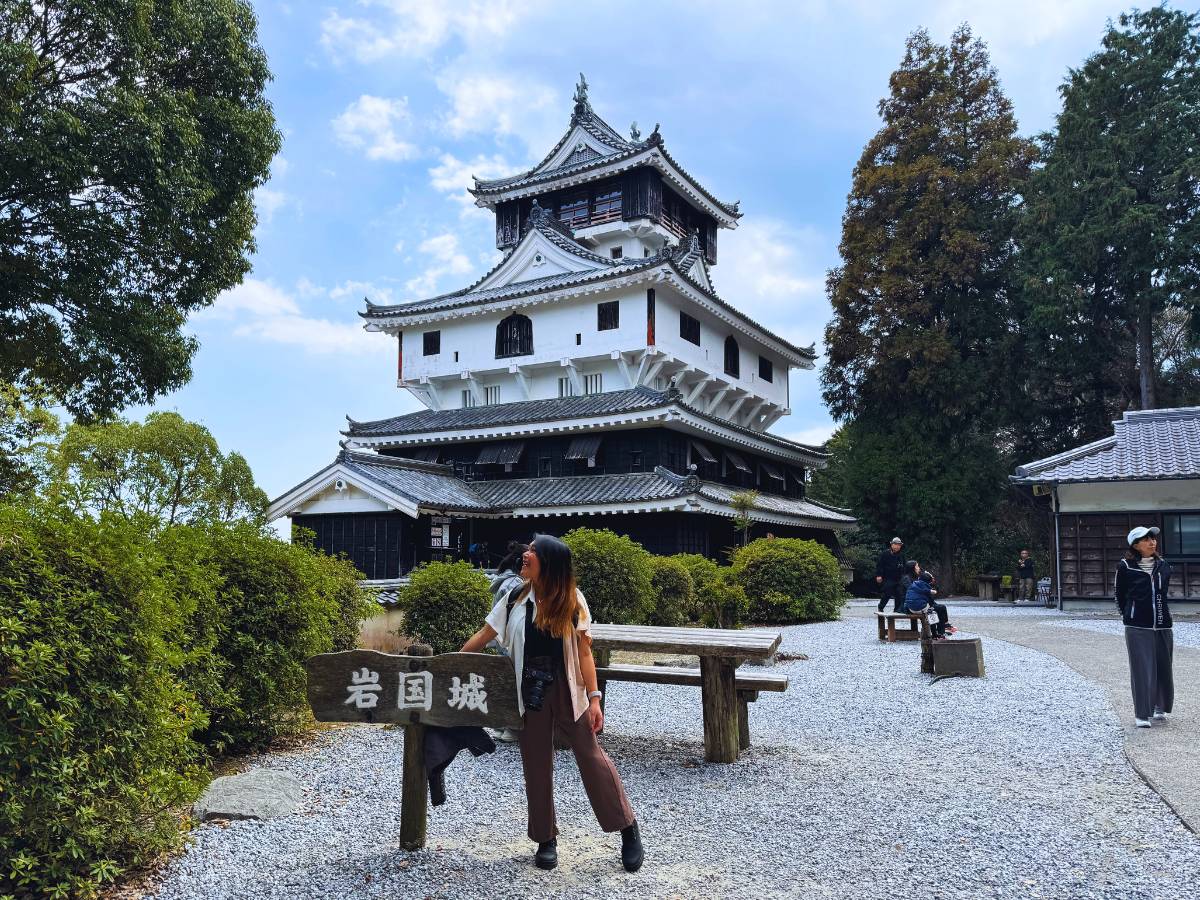
Perched on top of Mount Shiroyama, overlooking the Nishiki River and the city of Iwakuni, Iwakuni Castle is all about that dramatic view-meets-history combo. Originally built in the early 1600s, the castle was demolished just a few years later under shogunate orders (classic Edo period drama), but it was beautifully reconstructed in the 1960s to give visitors a glimpse into its former glory.

The climb to the castle is part of the adventure – you can either hike up through forest trails or take a scenic ropeway that glides over the treetops. Once you’re at the top, the panoramic view is chef’s kiss. You’ll see the winding Nishiki River, the town below, and of course, the famous Kintaikyo Bridge arching across the water.

Inside the castle, there’s a small museum with samurai armour, weapons, and historical tidbits about the Kikkawa clan, who originally ruled from here. The real magic, though, is in the setting – surrounded by mountains, cherry blossoms in spring, and rich green forests in summer, it’s picture-perfect from just about every angle.
It’s a great stop for anyone who loves castles with a bit of character and a lot of scenery. Definitely pair it with the attractions below, since they’re all part of the same lush riverside area.
Kintaikyo Bridge (錦帯橋)

Easily one of Japan’s most beautiful bridges, Kintaikyo Bridge is the stuff of fairytales – five elegant wooden arches stretching gracefully over the Nishiki River, framed by cherry blossoms in spring or fiery maple leaves in autumn. It’s been a symbol of Iwakuni for over 300 years, and walking across it feels like stepping back in time.
The original bridge was built in 1673 using an ingenious design that didn’t rely on nails – instead, the wooden parts were locked together with complex joinery to survive the strong river currents. It’s been rebuilt a few times over the centuries (thanks to typhoons and floods), but today’s version stays true to the original craftsmanship, with beautiful attention to detail in every beam.

Crossing the bridge is a delight – the gentle curves make for a fun and slightly bouncy walk, and the views up the river and back toward Iwakuni Castle are stunning. On the far side, you’ll find Kikko Park, home to historic samurai houses, museums, and peaceful gardens that make for a perfect afternoon wander.
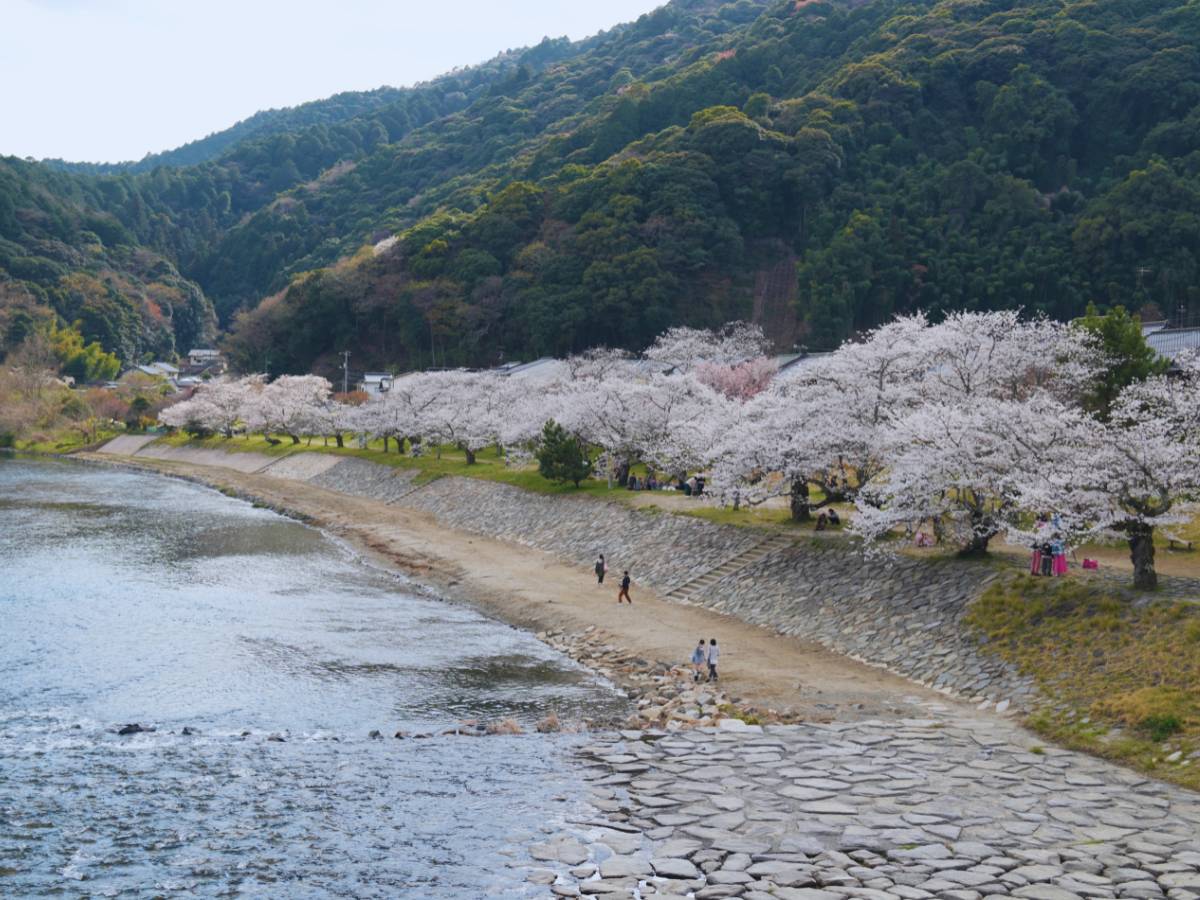
If you’re around in spring, this area becomes a cherry blossom hotspot with picnics, lanterns, and an almost magical atmosphere. But honestly, any season is a good time to see Kintaikyo – it’s that kind of place that charms you no matter when you go.
Iwakuni Shirohebi Shrine (岩国白蛇神社)
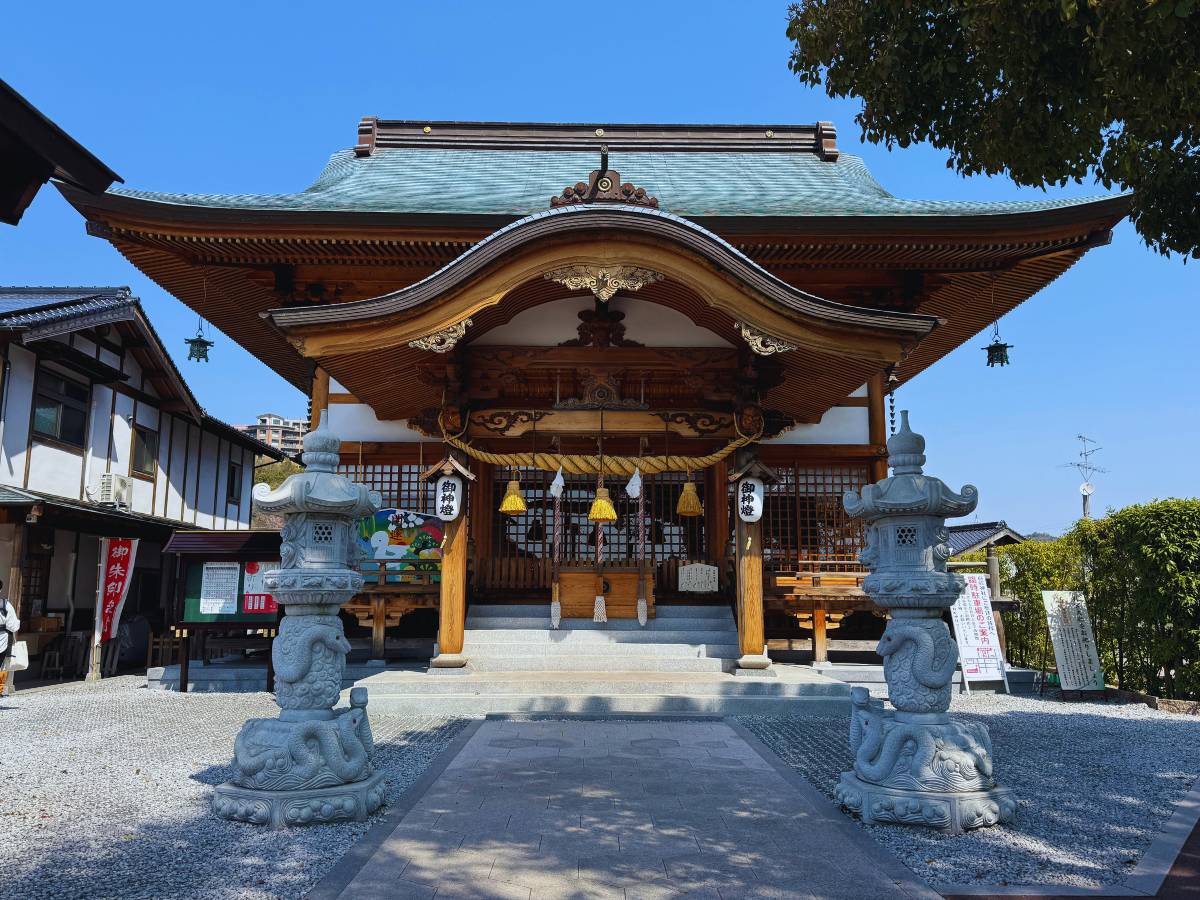
Nestled at the base of Mount Shiroyama, just a short stroll from Kintaikyo Bridge, Iwakuni Shirohebi Shrine is one of the most unique and intriguing shrines in the region – and maybe even in all of Japan. It’s dedicated to the white snakes (shirohebi) that are native to this area, considered sacred and believed to bring wealth, protection, and good fortune.
These snakes aren’t mythical – they’re real, pure-white albino snakes that have lived in Iwakuni for centuries. Locals have long treated them as messengers of Benzaiten, the goddess of wisdom, music, and financial blessings.

Because of their rarity and beauty, the snakes have been cherished and protected by the people of Iwakuni, and the shrine was established to honour them and continue that tradition.
The shrine itself is small but beautifully designed, with elegant white accents, snake motifs, and a peaceful atmosphere that feels almost otherworldly. You’ll find charms and ema (votive plaques) featuring snake illustrations, and you can even buy little gold and white snake figurines to bring prosperity home with you.

It’s a place where you can really feel the blend of folklore, nature, and spirituality that makes Japan’s smaller shrines so fascinating.
Iwakuni Shirohebi Museum 岩国シロヘビの館
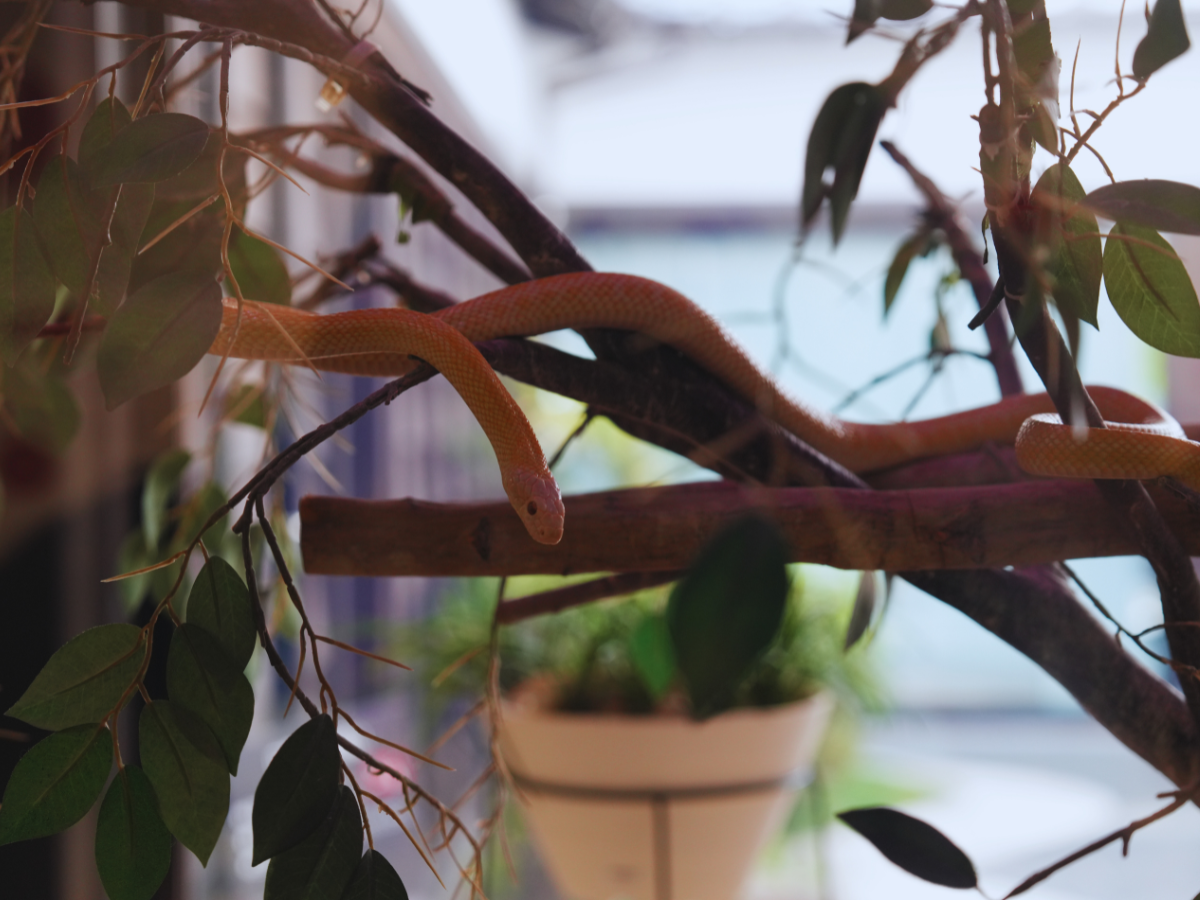
Tucked right next to the shrine, the Iwakuni Shirohebi Museum is a quirky little spot that adds a fun twist to your visit.
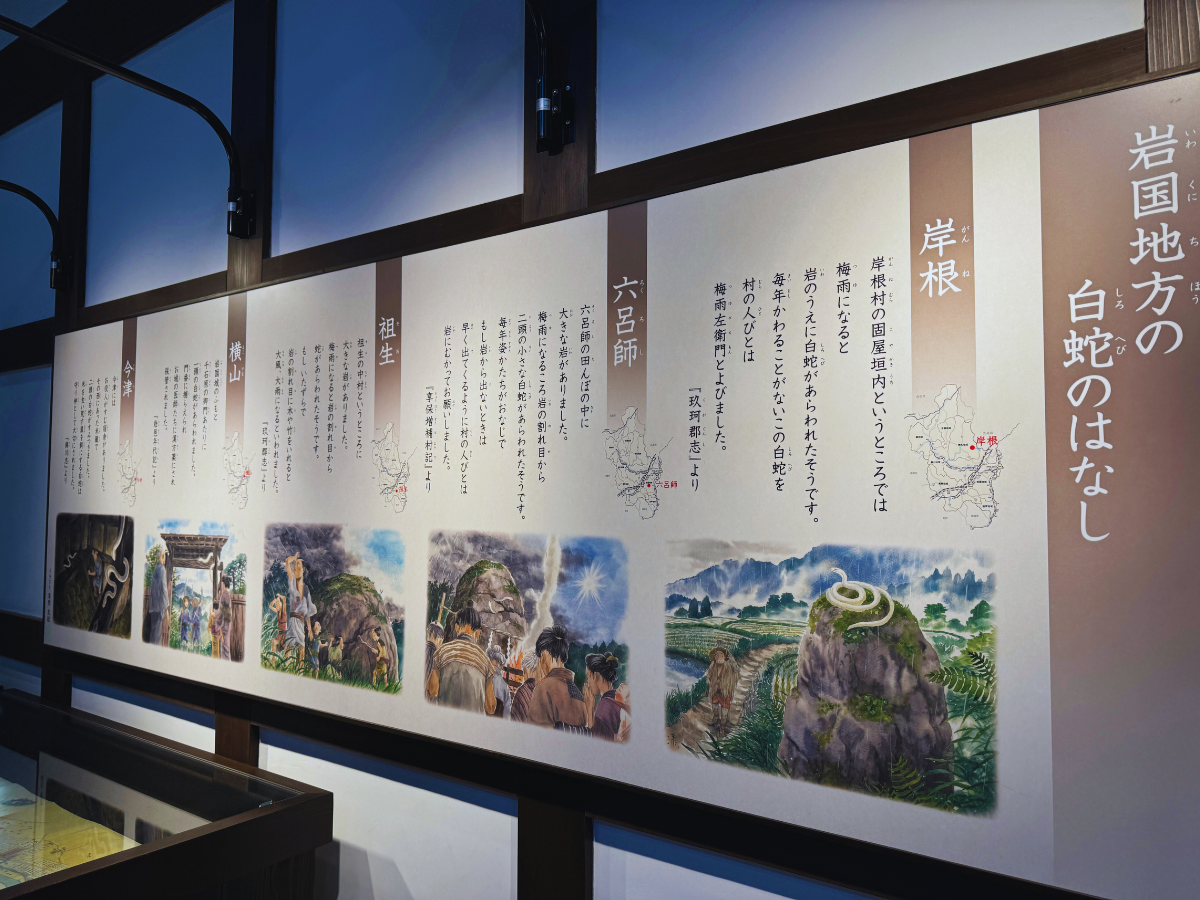
Inside the museum, you’ll find a mix of natural science and myth, with displays covering everything from the snakes’ biology to their role in regional legends. And yes, you’ll spot a few of the real stars themselves—live white snakes safely behind glass (so no worries if reptiles aren’t usually your thing). It’s a quick, fascinating stop that gives your Iwakuni adventure a little extra depth—and maybe even a bit of good fortune to take with you when you go.
Nagato Toyokawa-inari Shrine (長門豊川稲荷)

Tucked away in the quiet hills of Nagato, Nagato Toyokawa-inari Shrine is a peaceful spot that often flies under the radar – which makes it all the more special. Dedicated to Inari, the Shinto deity of agriculture, business, and prosperity, this shrine is instantly recognisable by its long, winding path of red torii gates, flanked by dozens of stone fox statues.
The fox, or kitsune, is believed to be Inari’s messenger, and you’ll see plenty of them here, each with its own unique expression. Some are fierce, some are playful, and some are a bit mysterious – they all add to the shrine’s slightly magical, quietly powerful atmosphere. It’s a brilliant spot for anyone who loves the spiritual side of Japan, minus the tourist crowds.
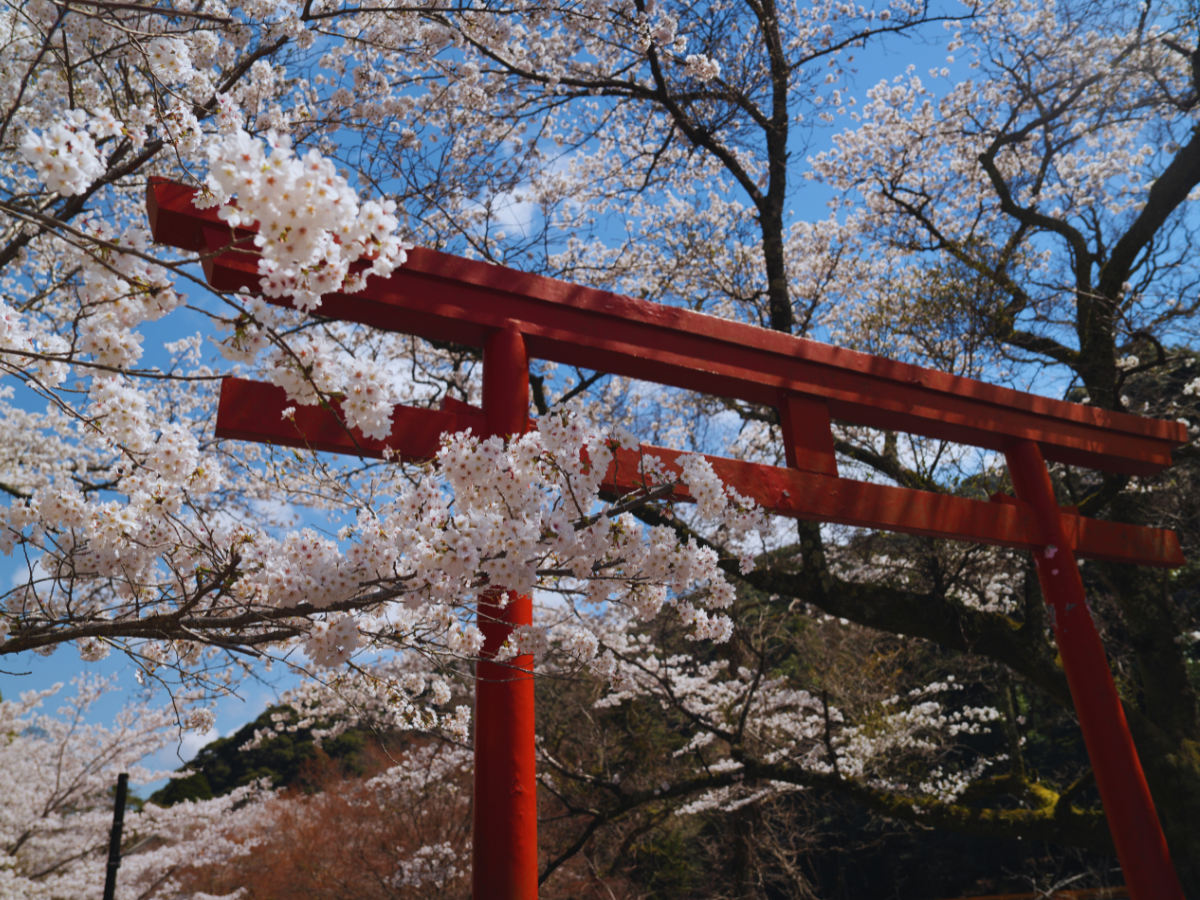
The walk up through the torii gates is gentle and calming, and the surrounding nature only adds to the sacred feel. On a misty morning or late afternoon, the light filters through the trees and the vermillion gates in the most enchanting way. It’s a great place to reflect, recharge, and take in the quieter side of Yamaguchi’s spiritual heritage.
While it’s not as dramatic as Motonosumi Inari, it’s got a charm all its own – less about the ocean views, more about the peaceful forest vibes and a deeper sense of local connection.
Ichinosaka River (一の坂川)
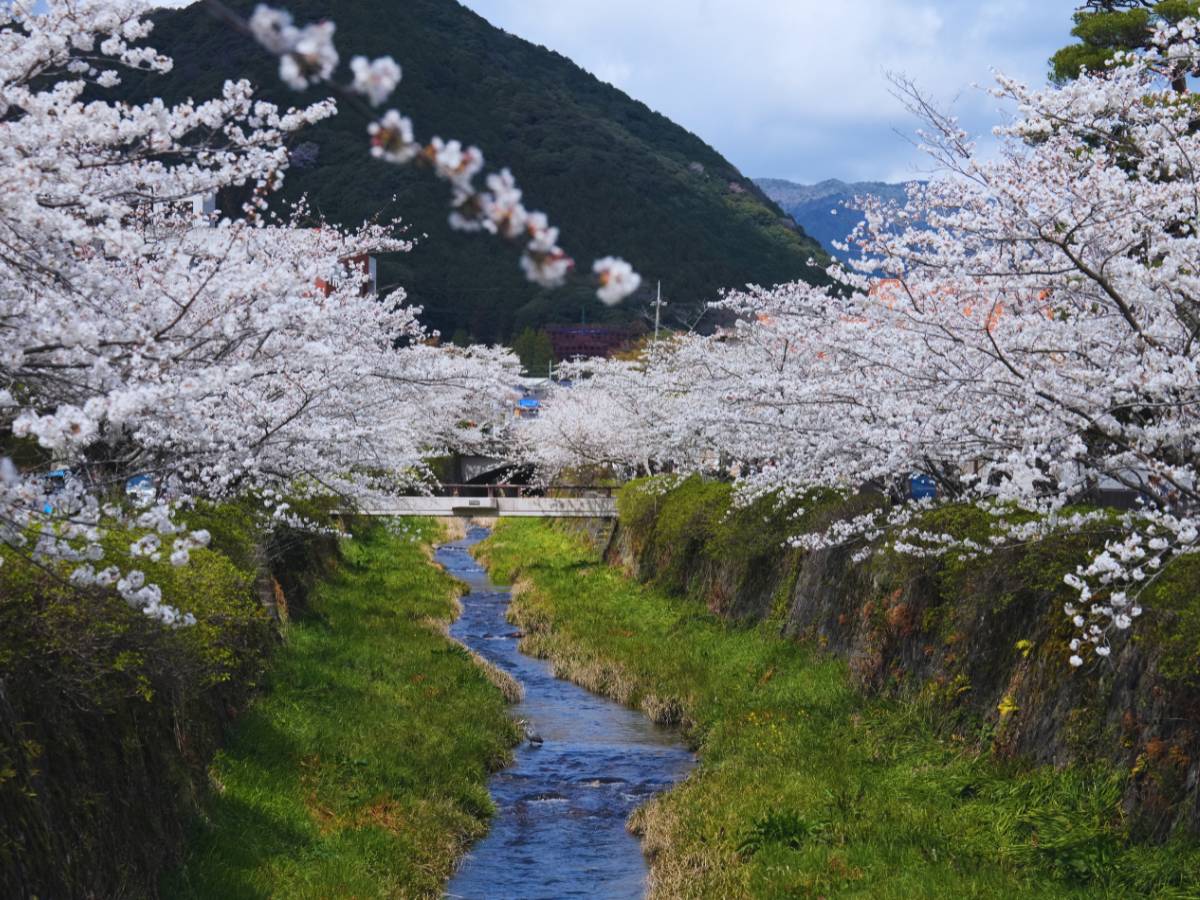
Ichinosaka River, flowing through the heart of Yamaguchi City, is one of those places that truly comes alive with the seasons – especially during cherry blossom season. When spring hits and the sakura trees along the riverbanks burst into bloom, it turns into a pink tunnel of petals that looks straight out of an anime.
This riverside walkway is lined with around 200 cherry trees, and when they’re in full bloom (usually late March to early April), the atmosphere is magical. Petals drift on the breeze, the water reflects the blossoms, and it’s just a dreamy place for a walk, picnic, or a quick photo stop if you’re in the area.

Outside of sakura season, the river is still a pleasant, laid-back spot – ideal for a coffee stroll or a quiet pause between more major sightseeing. There’s a nice blend of nature and city life here, with little bridges, benches, and occasional glimpses of traditional architecture.
While it might not be a must-see year-round, if your trip lines up with cherry blossom time, it’s absolutely worth a visit – and the soft, local charm of the area makes it a refreshing contrast to the flashier tourist spots.
Kikko Park (吉香公園)

Right at the foot of Iwakuni Castle, Kikko Park is a lush, spacious park that ties together many of the area’s key sights – and gives you a lovely place to breathe, wander, and enjoy a more local, laid-back vibe. It used to be the residence of the Kikkawa family, the ruling clan of Iwakuni, and now blends open green space with cultural and historical spots.
The park is dotted with traditional buildings, old samurai residences, fountains, flowerbeds, and even a small museum or two. In spring, it’s a cherry blossom haven, with paths lined in sakura and families picnicking under the petals. In summer, it’s full of greenery and the sound of cicadas. It’s the kind of place that makes you want to slow down and just enjoy being in Japan.
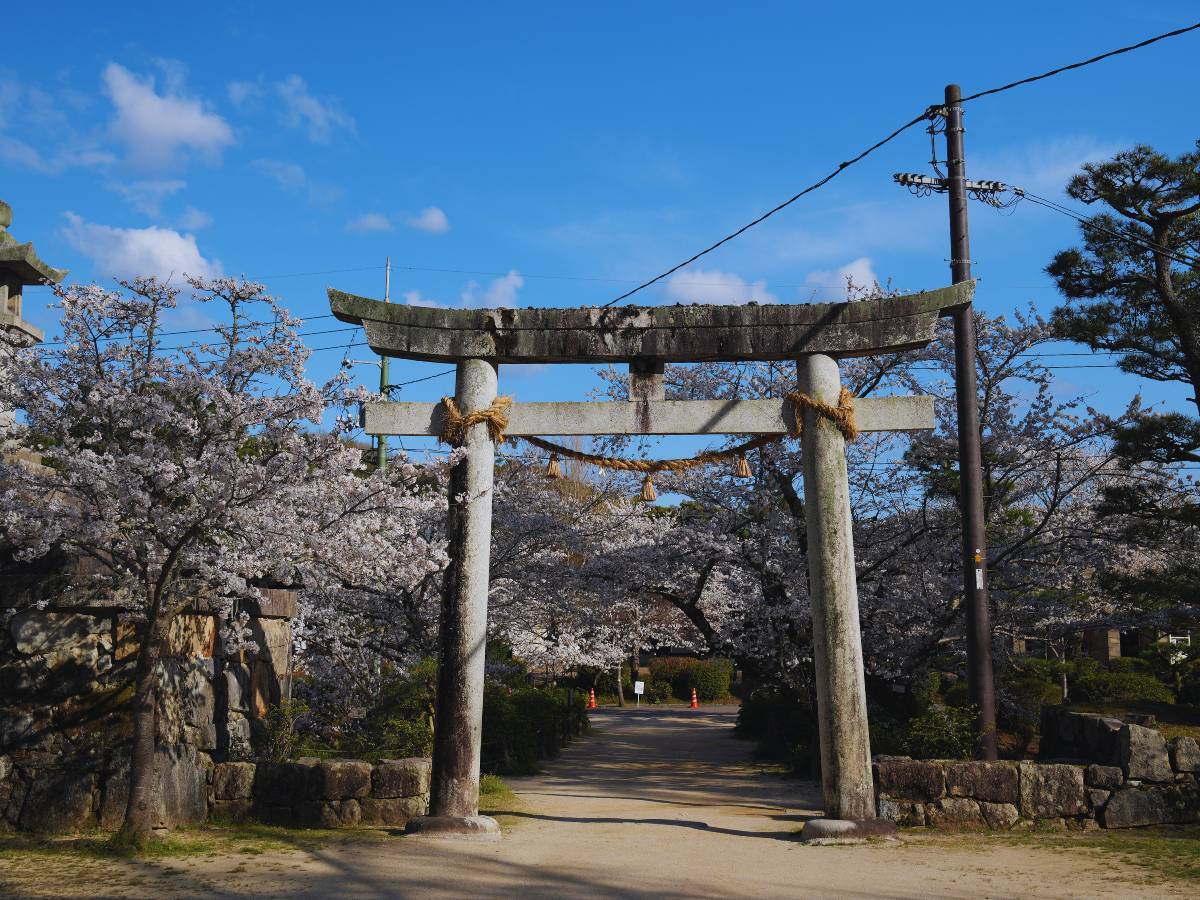
You’ll also spot koi-filled ponds, plum trees, and statues dedicated to local figures. It’s a good place to grab a snack from one of the nearby shops, sit under a tree, and take in the calm before (or after) climbing up to Iwakuni Castle or crossing Kintaikyo Bridge.
3-Day Yamaguchi Itinerary
Day 1 – Coastal Wonders & Countryside Sunsets
Your first day in Yamaguchi is all about the dramatic coastline, scenic drives, and peaceful rural landscapes. You’ll start by chasing sea views, wind your way through some of the prefecture’s most iconic landmarks, and finish the day in a relaxing onsen town tucked into the mountains.
Tsunoshima Bridge
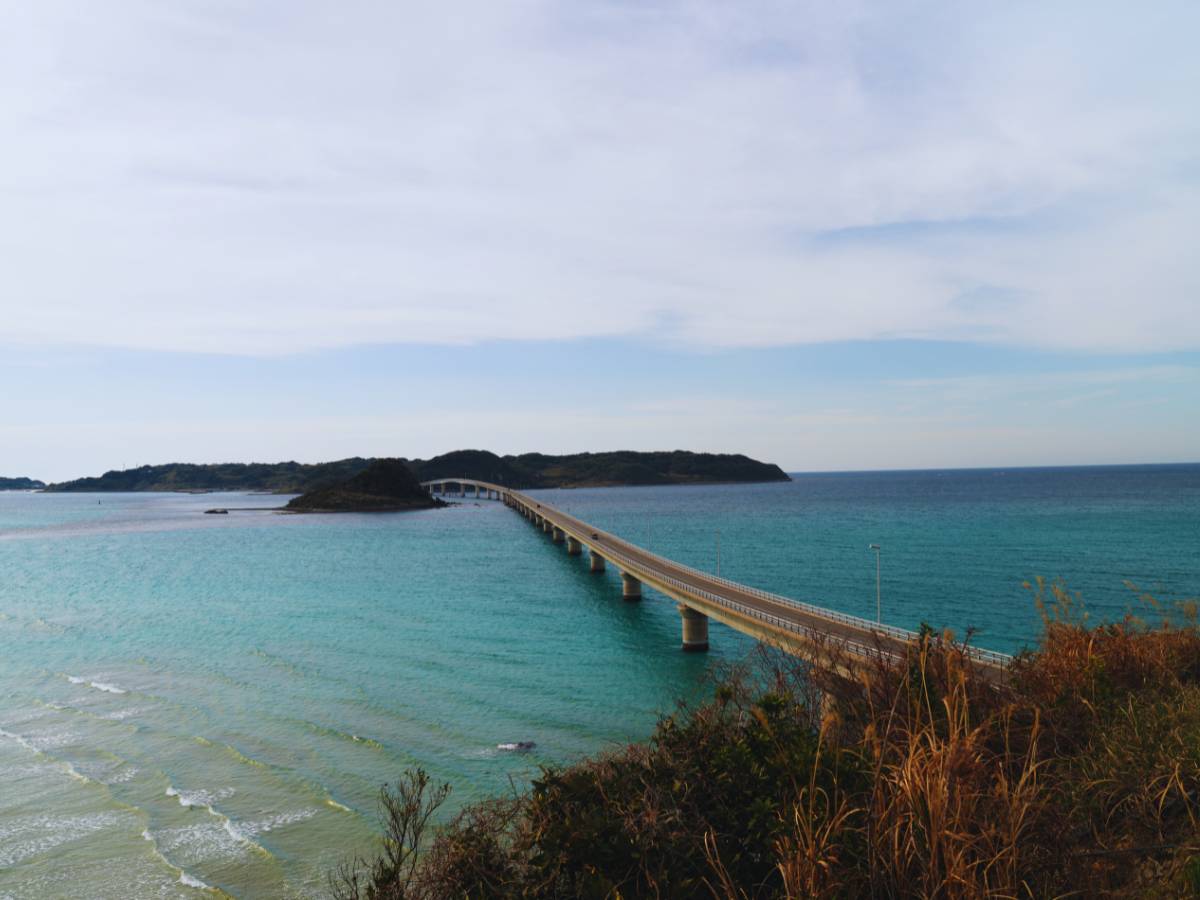
Start the day with an early drive out to Tsunoshima Bridge – one of the most iconic drives in Japan and a seriously good way to set the tone for your trip. The bridge stretches almost 2km across clear, tropical-toned waters to the island of Tsunoshima, and the views are unreal, especially when the sun’s out.
There’s a rest stop with a viewpoint right before the bridge – a great place to park, take a breather, and grab those postcard-worthy shots.
Motonosumi Inari Shrine

Next, head about 45 minutes down the coast to Motonosumi Inari Shrine. There’s paid parking nearby (usually a few hundred yen), and the walk down through the gates is short but incredibly scenic.
Plan to spend around 30 to 45 minutes here – enough time to enjoy the views, snap a few photos, and maybe have a go at tossing a coin into the shrine’s famously tricky offering box perched high above one of the gates. On windy days, the waves crashing below only add to the dramatic setting. Keep an eye out for local snack stalls, though they’re not always guaranteed.
Higashi Ushitobata Rice Terraces

From the shrine, it’s a quick 20-minute drive inland to the Higashi Ushitobata Rice Terraces – best visited in the late afternoon, just before sunset. These terraced fields face the coast and reflect the changing light in the most magical way, especially when the paddies are flooded in spring or early summer.
There’s no official entrance or fee, just a small parking area and a scenic viewpoint along the road. Bring something warm if it’s chilly out and settle in to watch the light shift across the sea and fields. It’s a peaceful, local kind of beauty – not a touristy spot, just pure countryside charm.
Nagato Yumoto Onsen

As the sky fades, head inland to Nagato Yumoto Onsen, a calm little hot spring town surrounded by mountains and river valleys. The drive takes just under an hour, and once you arrive, you’ll find the atmosphere is pure chill – lantern-lit walkways, the sound of the river, and that unmistakable smell of mineral-rich water in the air.
This is a great place to base yourself for the night, with a mix of traditional ryokan, modern inns, and boutique stays.
If you’re after something design-focused and cosy, SOIL Nagatoyumoto is a solid pick, blending clean aesthetics with natural warmth. Most accommodations offer access to onsen baths (some even private), and a few include meals, but there are also small cafés and local eateries nearby if you want to explore.
Day 2 – Sacred Sites & Subterranean Adventures
Day 2 is all about contrasts – from quiet forest shrines to vast open landscapes and mysterious caves below the earth. You’ll cover a bit more ground today, but the mix of spiritual stops, natural wonders, and a temple to wind down at makes it a well-rounded and rewarding route.
Nagato Toyokawa-inari Shrine

Start the morning at Nagato Toyokawa-inari Shrine. It’s a short drive from most accommodations in the area, so it’s an easy and peaceful way to ease into the day.
The main feature here is a gentle path lined with red torii gates and dozens of stone fox statues, each with its own character. Give yourself 30 minutes or so to explore, take a few photos, and enjoy the quiet. It’s a shrine with a lovely local feel and a good dose of spiritual calm.
Ichinosaka River (cherry blossom season only)
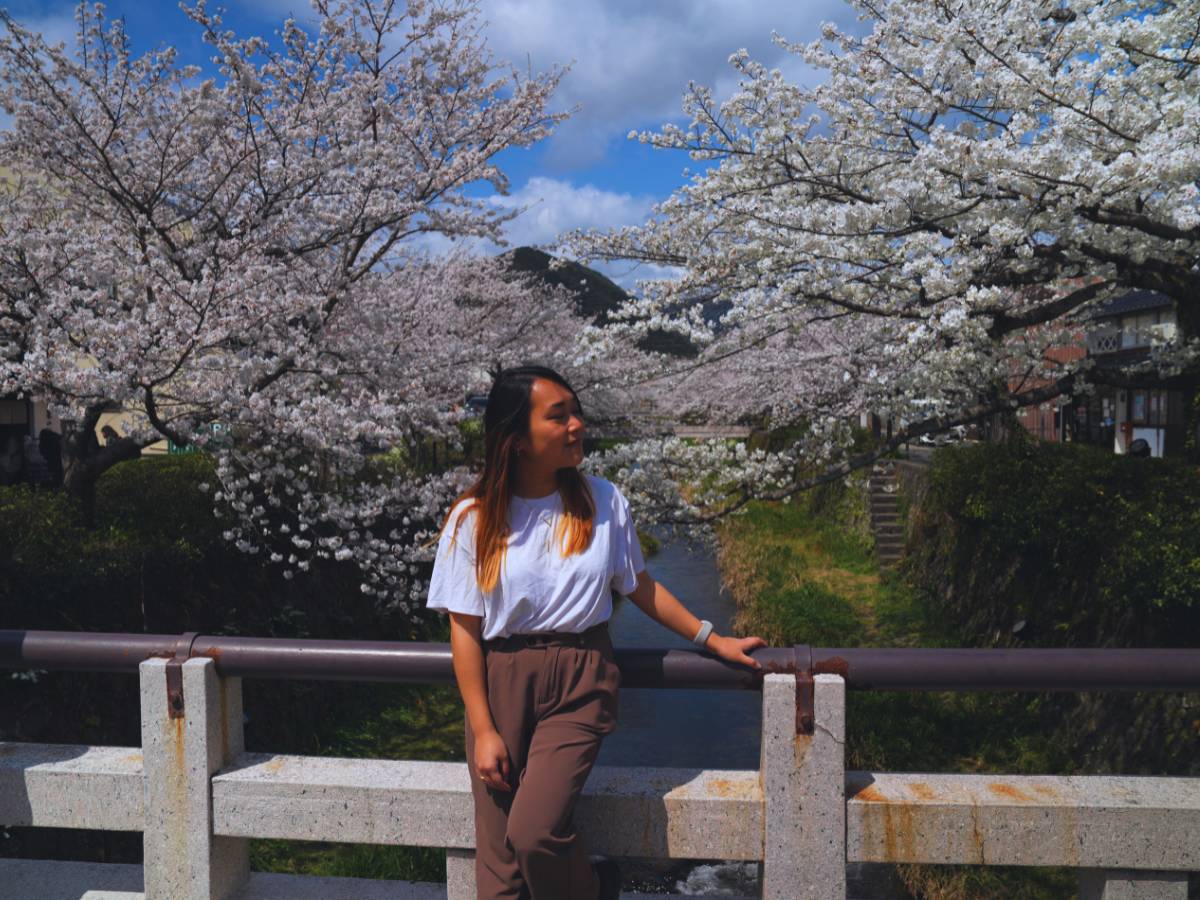
If you’re visiting during cherry blossom season (late March to early April), it’s worth stopping by Ichinosaka River on your way inland. It’s an easy stop that won’t take more than 30–45 minutes, perfect for a gentle walk or a few blossom-filled snapshots before moving on. Outside sakura season, you can skip this one without FOMO – it’s lovely, but not a year-round highlight.
Akiyoshidai

Next, head to Akiyoshidai. The drive from the shrine (or Ichinosaka River) takes around 1 to 1.5 hours, but it’s scenic and chilled – perfect for some road trip tunes and window-gazing.
There are several parking spots and a visitor centre with maps, toilets, and snacks. You can walk along one of the short trails to get up close to the limestone formations or just take in the view from the main lookout. The open space and rolling hills feel totally different from the rest of the itinerary so far – it’s the kind of place that makes you want to slow down and just exist in the landscape.
Akiyoshido Cave

Just a few minutes down the hill from the plateau is Akiyoshido Cave, an underground wonder that’s perfect for early afternoon exploring. Entrance is around ¥1,300 for adults, and you’ll want to allow about an hour to walk through the accessible section of the cave.
Wear comfy shoes – it can be a little damp in spots – and bring a light jacket if you’re prone to chills. You’ll exit the cave a short walk from where you started, and there are some souvenir shops and snack stalls nearby for a little recharge before heading back towards the city.
Rurikoji Temple
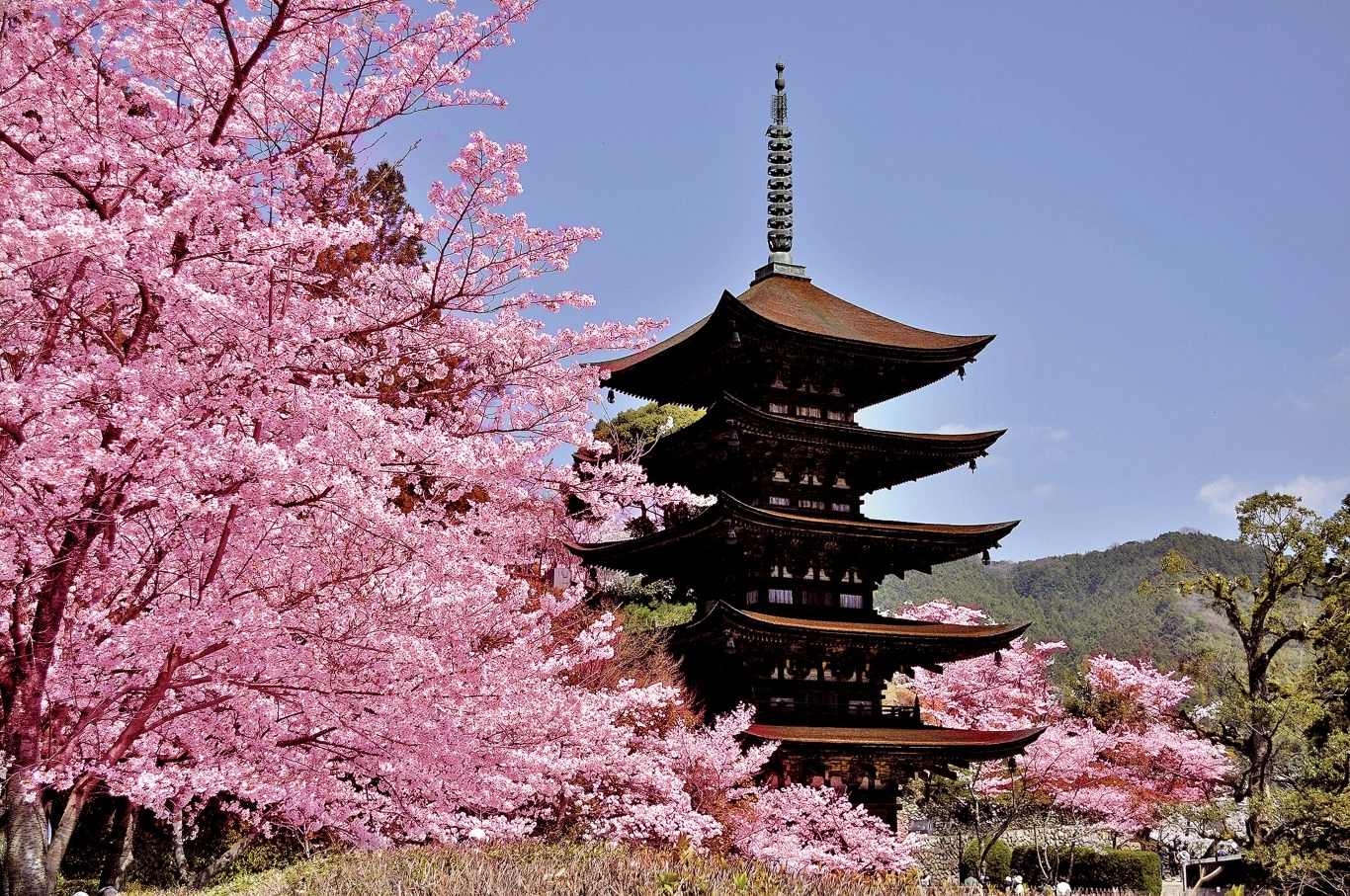
To round out the day, head into Yamaguchi City for a late afternoon visit to Rurikoji Temple. The pagoda is especially stunning as the light starts to soften in the early evening, and if you’re there in spring or autumn, the colours around it make it even more photogenic.
No entrance fee is required to explore the grounds, and you can easily spend 30–45 minutes here just soaking it all in.
A great place to stay as the day winds down is お宿Onn 湯田温泉, which blends comfort and style in that understated Japanese way. But there are loads of options here – from family-run inns to bigger hotels – so you can choose whatever suits your travel style.
Day 3 – Castles, Bridges & White Snakes in Iwakuni
Your final day in Yamaguchi brings you south to Iwakuni, a riverside city packed with charm, history, and a few quirky surprises. It’s all about classic Japan today – from mountaintop castles to samurai gardens, scenic bridges, and a shrine that honours mystical white snakes. Start early, take your time, and enjoy a day that feels like stepping into a storybook.
Travel to Iwakuni
Depending on where you stayed the night before, it’s about a 1.5 to 2-hour drive or train ride down to Iwakuni. If you’re coming from Yuda Onsen, the fastest route is by car or a train transfer through Shin-Yamaguchi Station. If you’re driving, aim to leave early – around 8am is ideal – so you can make the most of the day without feeling rushed.
Iwakuni Castle

Start with Iwakuni Castle, perched on Mount Shiroyama and offering panoramic views over the city and river below. You can hike up if you’re feeling energetic (it takes about 20–30 minutes), but most people opt for the ropeway – it’s around ¥350 one way / ¥560 round trip, and the ride itself is a fun little experience.

Give yourself about 1 to 1.5 hours for the ropeway, castle, and a bit of wandering around the mountaintop trails.
Kikko Park

After descending from the castle, you’ll find yourself right in Kikko Park. It’s a great spot for a slow wander, especially in spring or autumn when the trees are putting on a show. There are ponds with koi fish, fountains, and plenty of shaded benches if you want to grab a drink or have a little bento lunch under the trees.
There’s no entrance fee to explore the park, and you won’t need more than 45 minutes to an hour unless you want to check out some of the smaller museums dotted around.
Kintaikyo Bridge
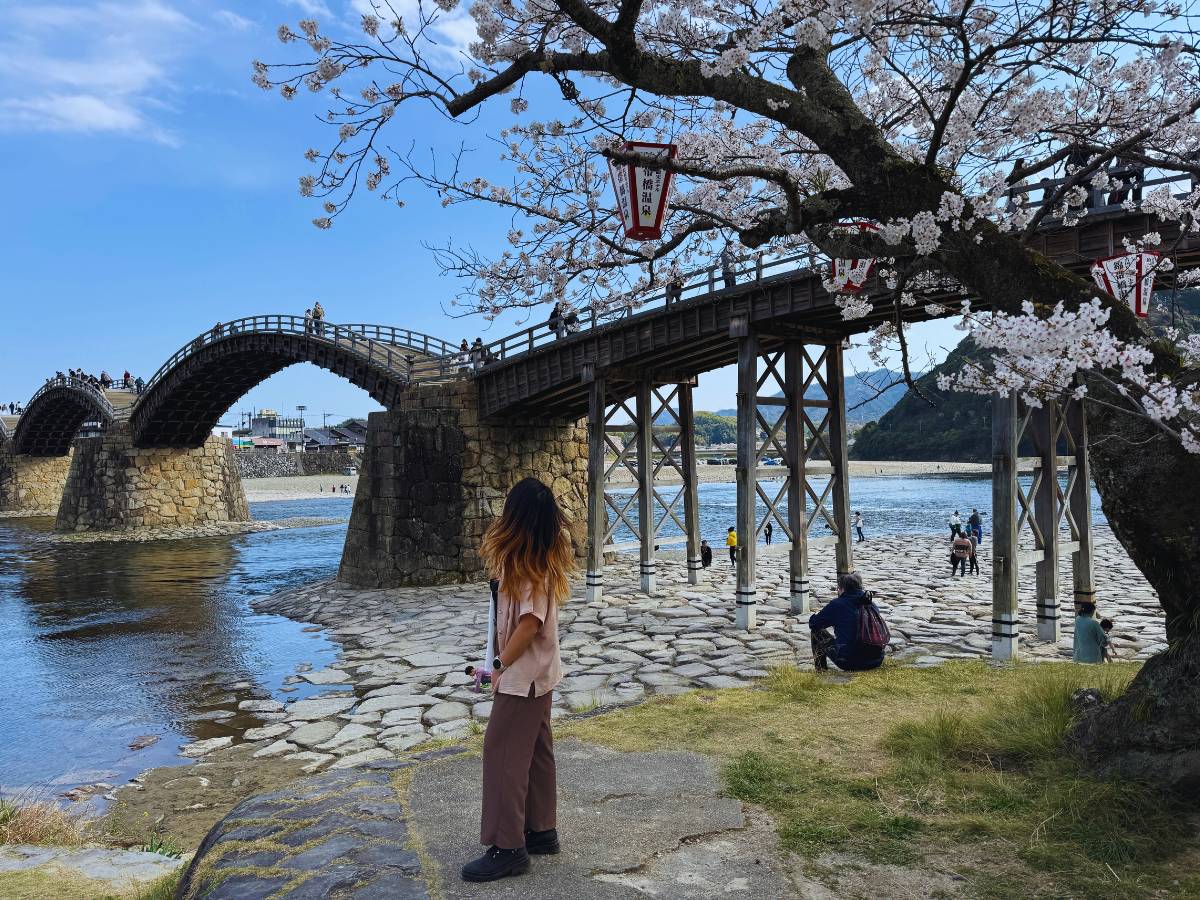
Just a few steps from Kikko Park is Kintaikyo Bridge.
You’ll need to pay a small fee to cross (around ¥310 for adults, or you can get a combo ticket that includes the ropeway and castle). Take your time walking across – the views from the middle are lovely, especially with the castle up on the hill in the background.
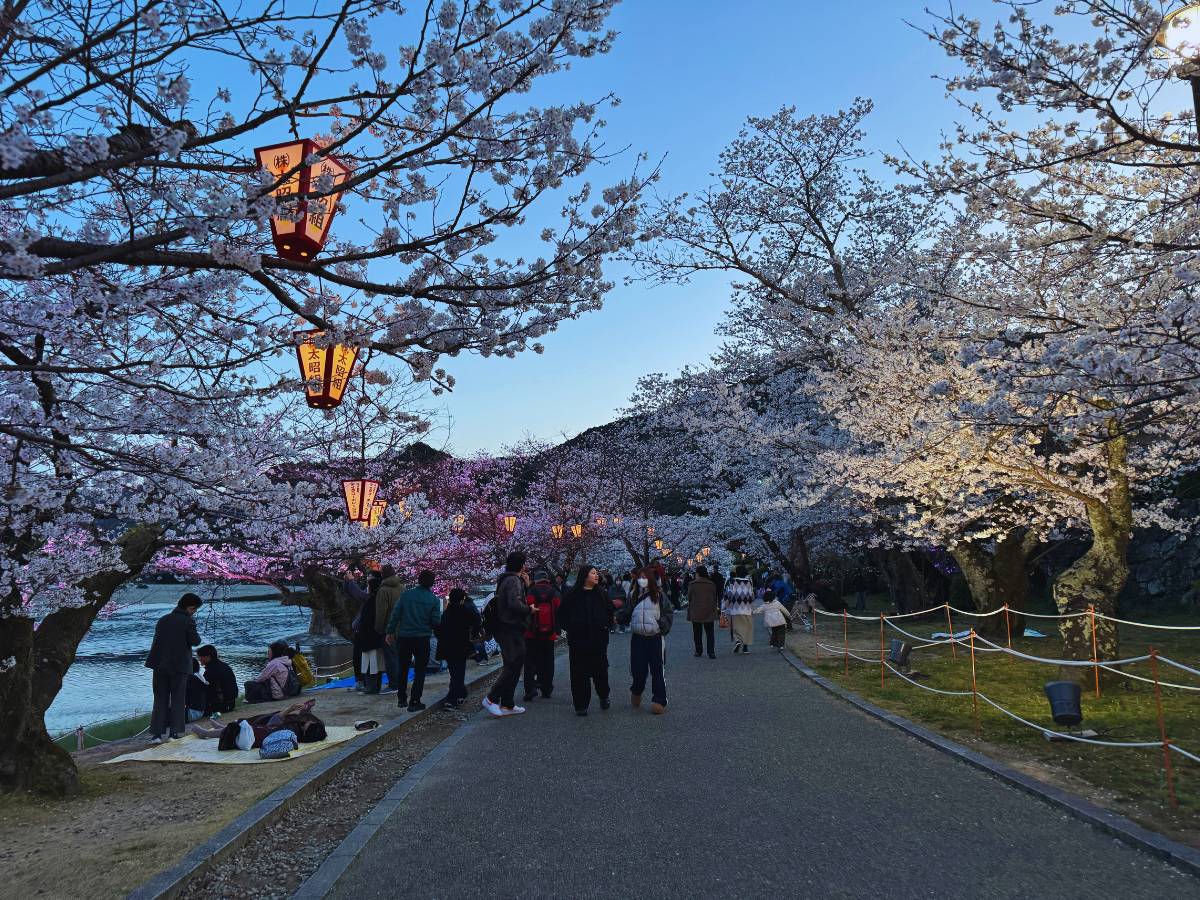
On the opposite bank (especially stunning and buzzing during sakura season), you’ll find a few traditional sweet shops and cafes. It’s a great place to stop for some matcha soft serve or a snack before heading to your final stop.
Iwakuni Shirohebi Shrine

Just a short walk from the bridge is Iwakuni Shirohebi Shrine. You can pick up snake-themed charms, draw fortunes, or just enjoy the peaceful setting and soft background music.

Next door is a little museum with live (and very chill) white snakes in glass enclosures, so if you’re curious, it’s worth a quick peek. You won’t need more than 30–40 minutes here, but it’s a charming and offbeat final stop before heading home or on to your next destination.
Beyond the Guidebooks
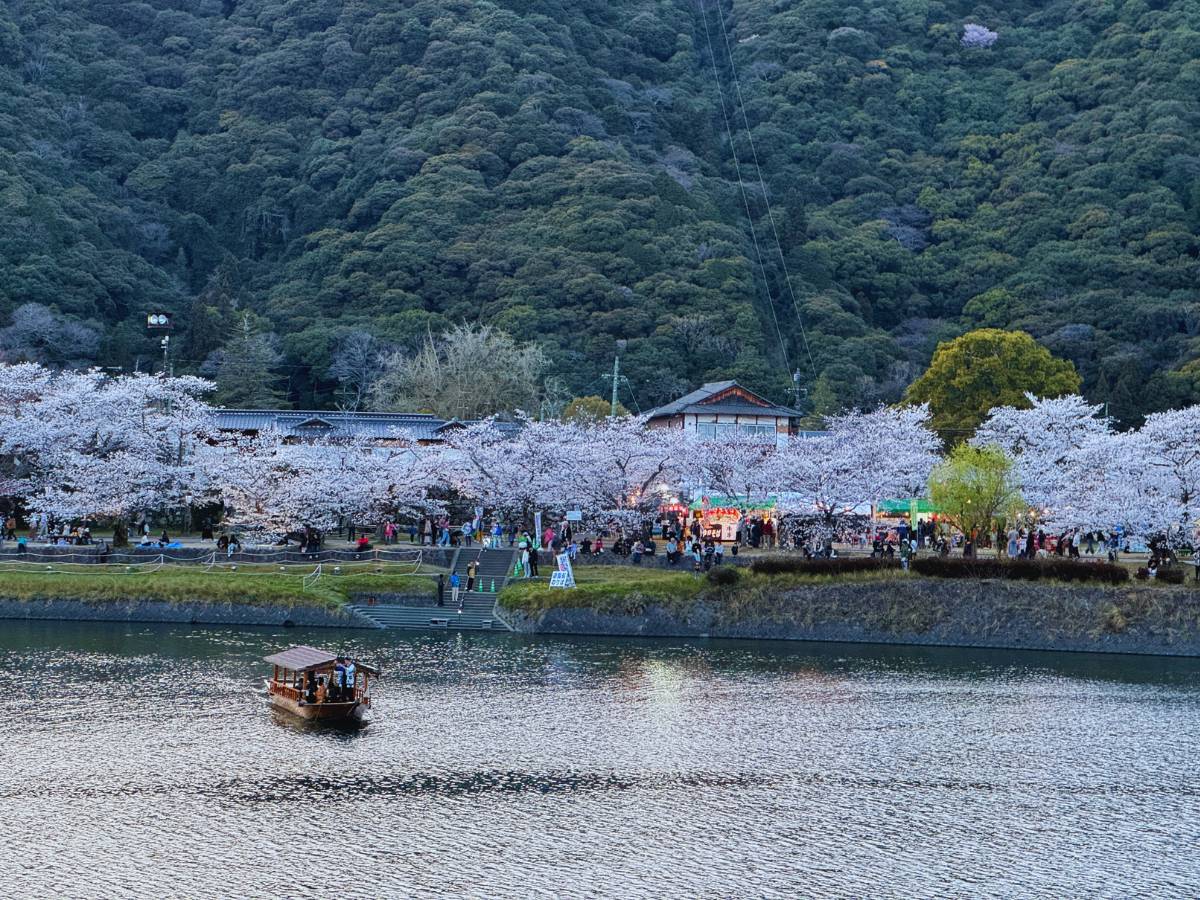
There’s something special about places that aren’t plastered all over Instagram or jammed into every travel brochure — and Yamaguchi is one of those places. It’s quietly spectacular, full of natural beauty, rich history, and moments that feel personal rather than performative. Here, the views are unfiltered, the crowds are few, and the pace of life invites you to slow down and really take it all in.
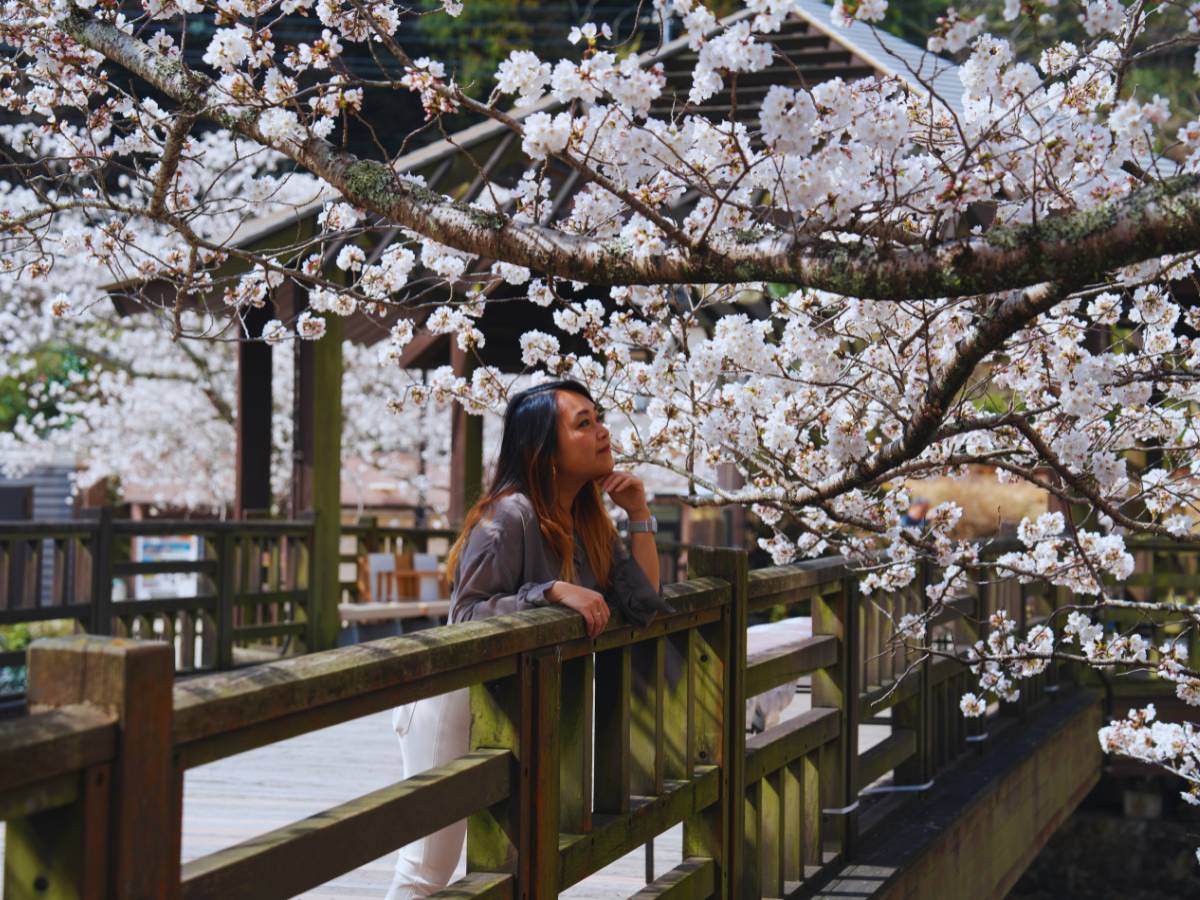
Exploring somewhere like Yamaguchi reminds you that Japan has so much more to offer beyond the big names and neon lights. From misty mountaintop castles to golden sunsets over terraced fields, this region has a way of surprising you — not in a flashy, look-at-me way, but in a gentle, lasting one. It lingers.
If you’re feeling inspired to go beyond the usual tourist trail but don’t know where to begin — we’ve got you. Our Travel Planner service isn’t just about crafting custom itineraries (though we do that too), it also includes on-the-ground support, like booking rental cars, reserving restaurants and ryokan, and helping with anything that makes your trip smoother. Especially in lesser-known areas like Yamaguchi, a bit of local help can go a long way.

